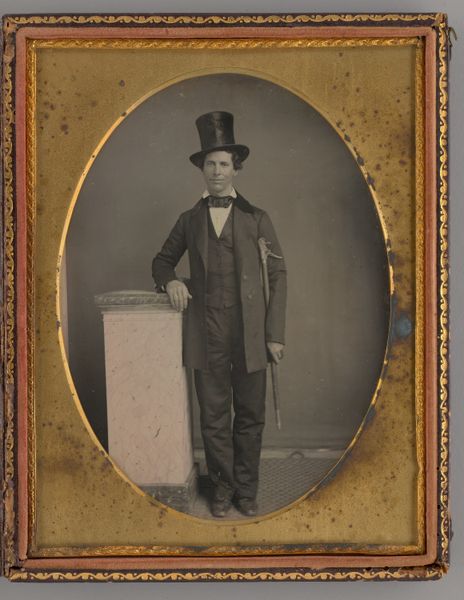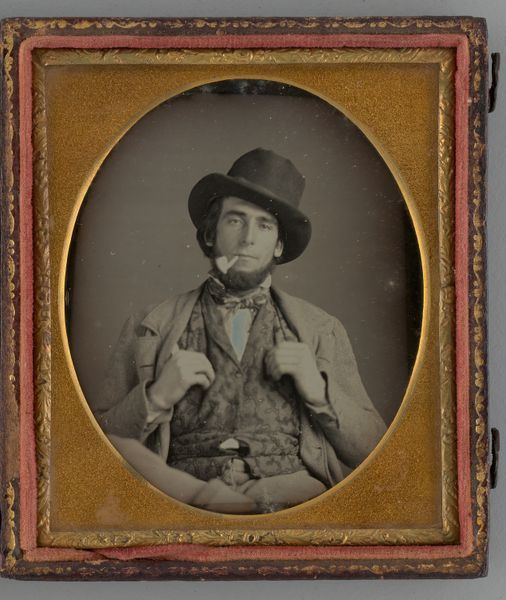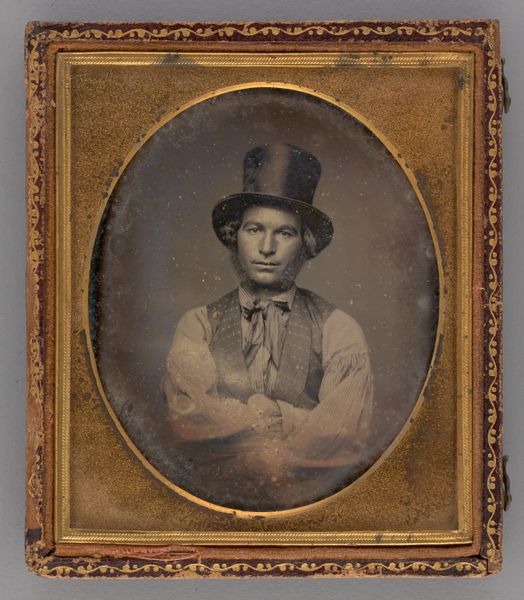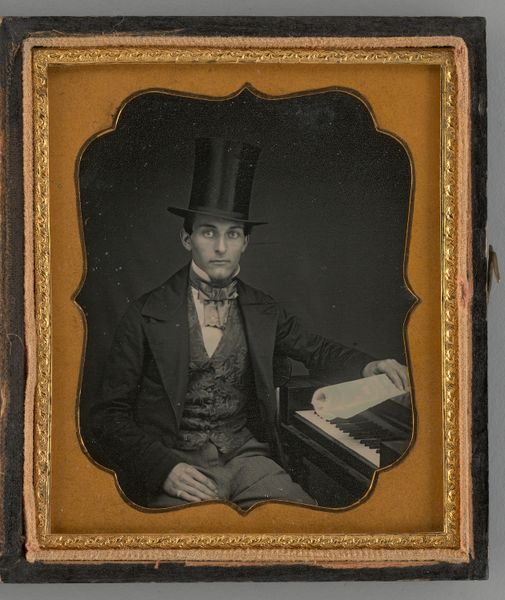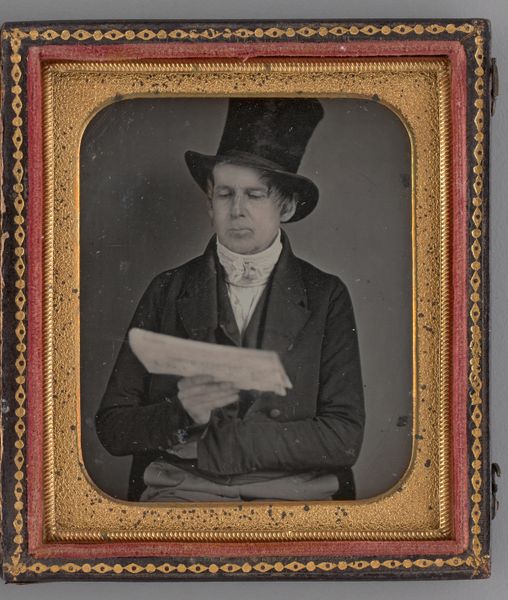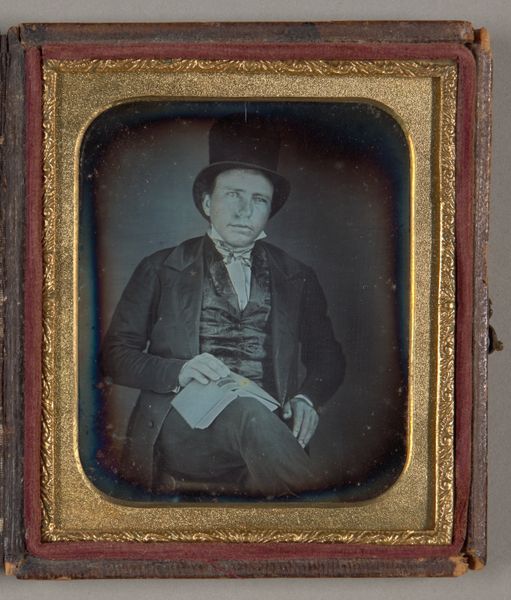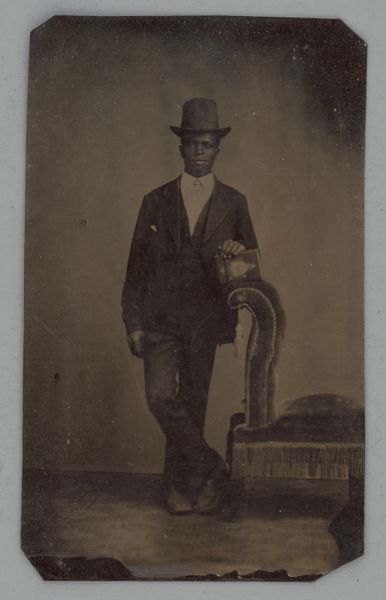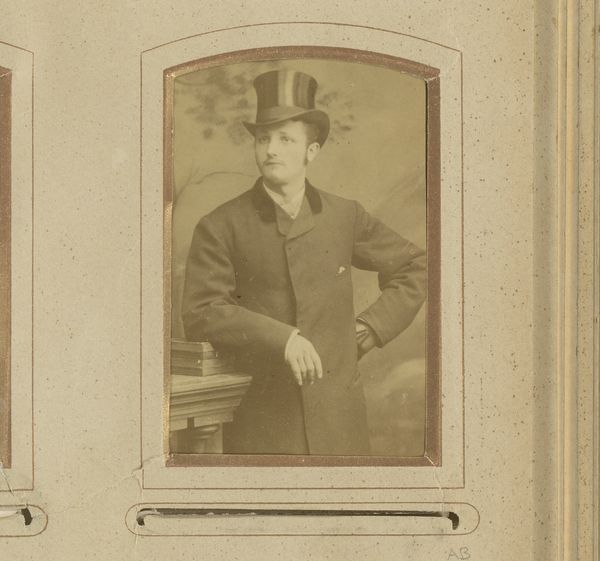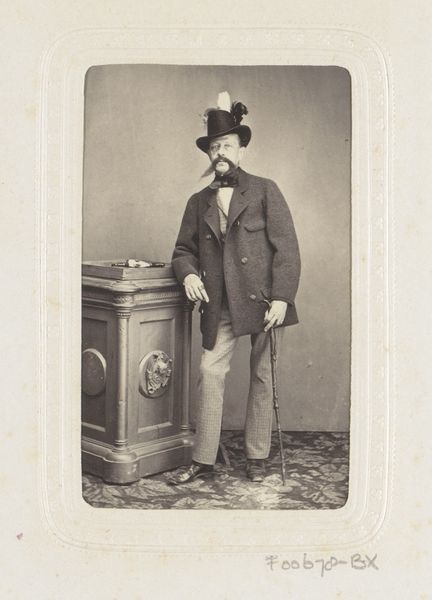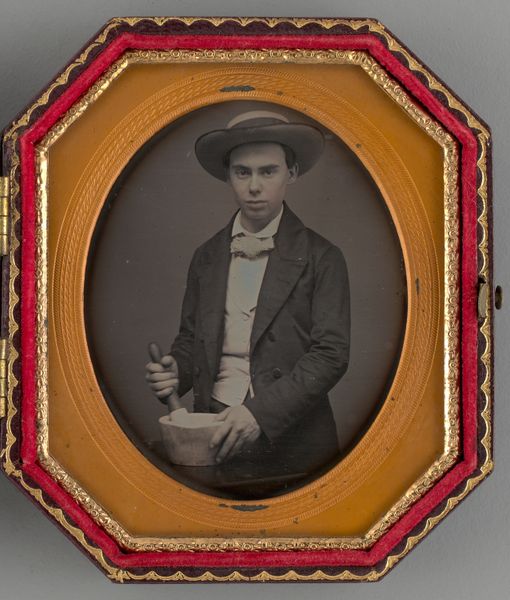
daguerreotype, photography
#
portrait
#
16_19th-century
#
sculpture
#
daguerreotype
#
photography
#
realism
Dimensions: 8.2 × 7 cm (3 1/4 × 2 3/4 in., plate); 9.2 × 16.1 × 0.9 cm (open case); 9.2 × 8 × 1.6 cm (case)
Copyright: Public Domain
Editor: So here we have an intriguing daguerreotype, "Untitled (Portrait of a Man)," dating back to 1855, currently residing here at the Art Institute of Chicago. It is such a stark, but also cheeky image. There is something about his grin that feels very alive. How do you read this piece? Curator: Alive is the perfect word! To me, this isn't just a stiff portrait. It whispers a story – maybe he’s just had a lucky hand at cards, or perhaps he’s caught the eye of someone special. Daguerreotypes, especially, capture such a fleeting moment. Editor: I hadn't thought of it that way! The quick flash and that single take would certainly solidify whatever energy was happening. What's with the frame though? Is that typical? Curator: Oh, the presentation is almost as important as the picture! The frame adds such warmth to the stern man. It's opulent, gilded. Back then, the whole process – from the click of the camera to the framing – would have made it such a lavish affair, and also suggest the subject had some wealth. So he might be winking for several reasons. Editor: You’ve really opened my eyes to the narrative potential within a simple portrait. I guess photography, even in its infancy, was more than just capturing an image. Curator: Exactly! It's about immortalizing a feeling, a possibility, a moment. I see art, and more than that, the seeds of our shared experience reflected back at us. Don't you? Editor: I completely agree. It’s a little portal in time that speaks volumes about not only the sitter, but us now, looking in!
Comments
No comments
Be the first to comment and join the conversation on the ultimate creative platform.
